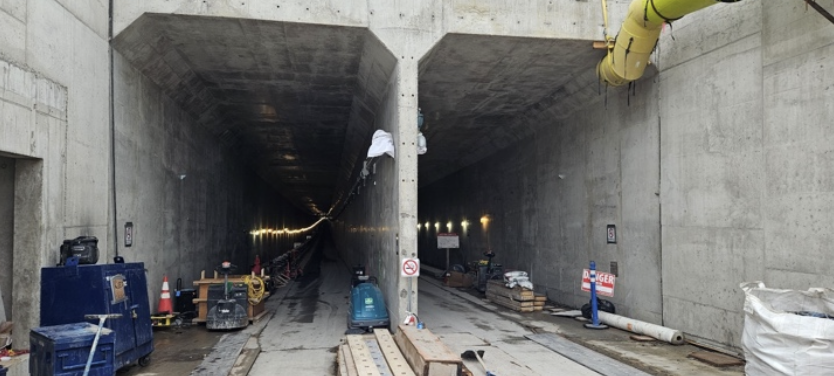Tunnels
✩
Tunnels ✩
Application Note
Tunnel Protection & Corrosion Prevention | Strengthen & Waterproof Concrete

The Problem: Corrosion, Water Infiltration & Structural Weakening in Tunnels
Tunnels are constantly exposed to chloride exposure, water ingress, and structural stress, leading to rebar corrosion, concrete deterioration, and costly repairs. Without proper protection, cracks and moisture infiltration weaken tunnel infrastructure, increasing safety risks and maintenance costs.
The Solution: Surtreat’s Comprehensive Tunnel Protection System
Surtreat provides a multi-step preservation system to prevent corrosion, strengthen concrete, and waterproof surfaces:
Corrosion Prevention & Concrete Strengthening:
- TPS XII: Vapor-phase corrosion inhibitor that protects embedded rebar and prevents chloride-induced corrosion.
- TPS II: Concrete densifier that strengthens the structure and reduces porosity.
- SurCoat: Cementitious repair system for cracks and exposed rebar.
Waterproofing & Surface Protection:
- Repel WB: Hydrophobic water repellent that prevents moisture infiltration and reduces freeze-thaw damage.
Application Process: How to Protect & Repair Tunnels
Step 1: Surface Cleaning
- Remove dirt, contaminants, and deteriorated concrete using SurCoClean.
- Ensure all surfaces are clean for maximum penetration of protective treatments.
Step 2: Apply TPS XII
- Spray TPS XII to inhibit corrosion and form a protective film on embedded rebar.
- Effectively penetrates concrete to stop ongoing corrosion and extend tunnel service life.
Step 3: Apply TPS II
- Apply TPS II to strengthen the concrete and reduce permeability.
- Enhances tunnel durability against vibration and traffic-induced stress.
Step 4: Repair with SurCoat
- Use SurCoat to seal cracks and restore areas with exposed rebar.
- Provides a cement-like finish that resists shrinking and enhances adhesion.
Step 5: Apply Repel WB
- Final application of Repel WB creates a hydrophobic barrier against moisture infiltration.
- Reduces freeze-thaw damage and minimizes future maintenance needs.
Results: Why Surtreat’s Tunnel Protection System Works
✅ Extended Tunnel Service Life – Prevents rebar corrosion, strengthens concrete, and seals surfaces.
✅ Enhanced Structural Durability – TPS II reinforces concrete against vibration and environmental stress.
✅ Long-Term Corrosion Prevention – TPS XII protects embedded steel from chloride attack.
✅ Superior Moisture Protection – Repel WB blocks water infiltration and freeze-thaw deterioration.
✅ Reduced Maintenance Costs – Minimizes repairs and extends tunnel lifespan.
Looking for something else?
Check out our Applications Page for more solutions.
Need expert guidance? Contact Surtreat today to discuss your project needs.
